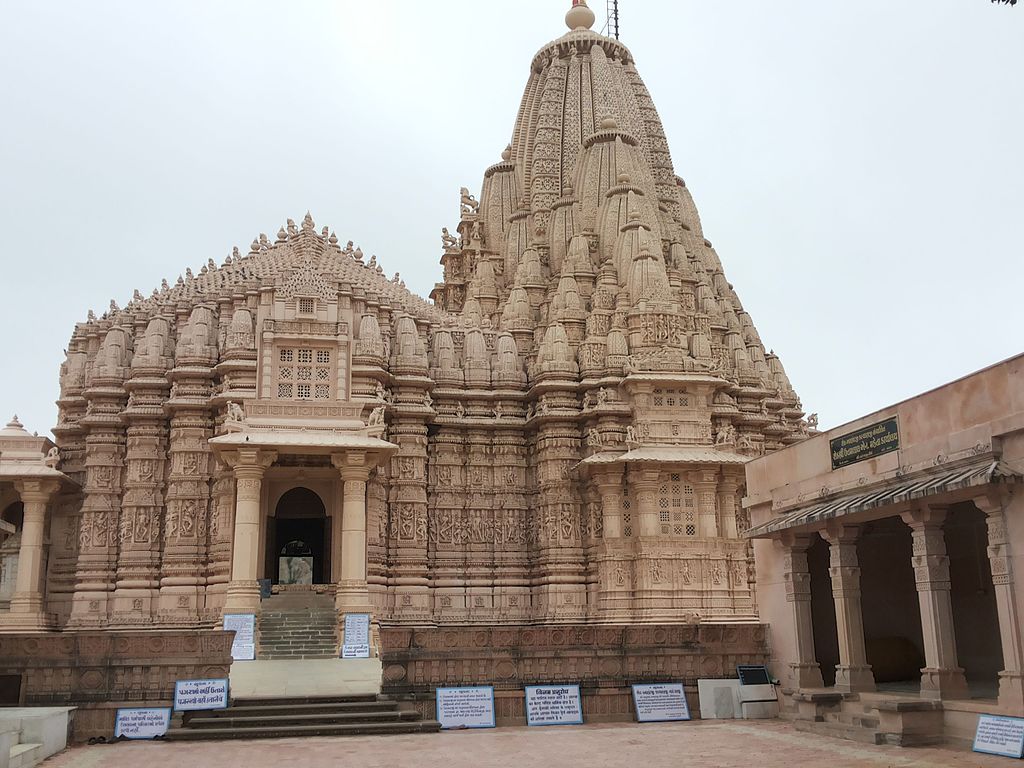Taranga is a Jain pilgrimage center in Mehsana district, Gujarat, India. It is one of the few tirthas where both the Shvetambaras and the Digambaras visit. The oldest temple constructed in 1121 by the Chaulukya king Kumarapala, under the advice of his teacher, Acharya Hemachandra. A 2.75 m marble statue of Ajitnath is the central idol. The Svetambara compound consists of 14 temples in all.
Shrine’s History
The Taranga hill bears the name of Taringa or Taranga, probably from a shrine that has long been there dedicated to a local deity Taran Mata situated 2.5 km north of the hill. The idol in the temple is of Buddhist deity Tara originally. The hill for the most part covered with brushwood and forest is, on the east and west, crossed by paths that lead to a plateau where stand the temples built of white sandstone and brick. The main temple was built by Chaulukya king Kumarapala after he became the follower of Jainism under his teacher Acharya Hemchandra. The special times of pilgrimage are during the full moon in the months of Kartika and Chaitra. In the adjoining shrines are various images. In one is an upright block of marble with 208 representations of the Tirthankara. Digambaras settled on this isolated hill with its three rocky peaks in early times. It is said that 35,000,000 monastics, including the Ganadharas Vardutta and Sagardutta, attained moksa here. The two hillocks named Kotishila and Siddhashila have idols of the Tirthankaras, Neminath and Mallinath dated Vikram Samvat 1292. There are 14 Digambara temples in the foothills and a Digamabara Dharamshala is at the foothills. On the highest elevation of the three-peaked hill, there stands a “Tonk”, a shrine built by Digambaras, it houses a marble statue of the nineteenth Tirthankara, Mallinath. The place was historically associated with Buddhism also. Nearby cave, locally known as Jogida ni Gafa has a relics of four Buddhist statues under the Bodhivriksha. The cave was used by Buddhist monks years ago
Architectural Relevance of This Shrine
In the center of the main vast square of the length of 230 ft and the breadth 230 ft, this temple is 50 ft long, 100 ft broad and 142 ft high. It has a perimeter of 639 ft. The 275 m high wooden summit of this temple is beautifully carved. It has seven domes. It is hard to see how the stones were ever brought through the forest to the top of the hill. The red interior of the temple throws out in strong relief the white marble figure of Ajitnath, the second Tirthankara seated in the shrine, decorated with precious stones let into the marble. The features wear the usual expression of deep repose or quiet covert scorn. On the right-hand side of the temple, there are footprints of Rishabha and of the 20 Tirthankaras and on the left-hand side, there is a temple of Gaumukh, the Samavasarana, and the Jambudvipa painting. On the outer platform of the main temple, there are idols of Padmavati and Kumarapala himself.
Shrine’s Map Location and How to Go There
By Road
This teerth is established on Taranga hill. This is 61 km from Mehsana. Taranga station is 10 km away from teerth.
By Rail
The nearest Railway station is at Taranga
By Air
The nearest Airport is Sardar Vallabhbhai Patel International Airport Gujarat
Events Celebrated at This Shrine
Mahavir Jayanti
